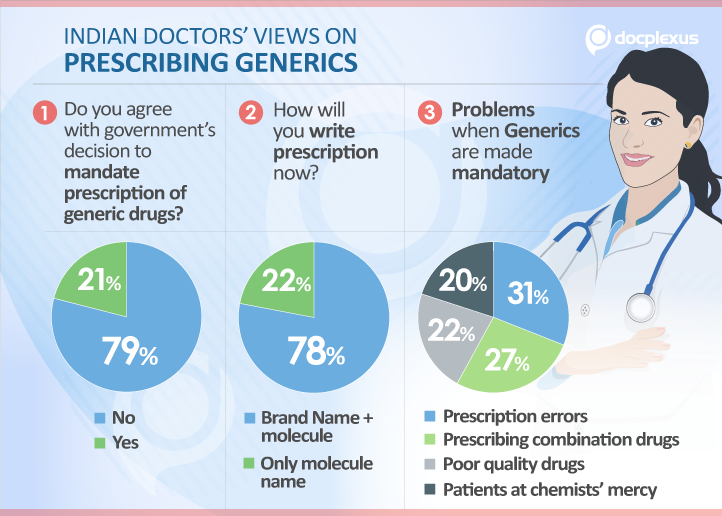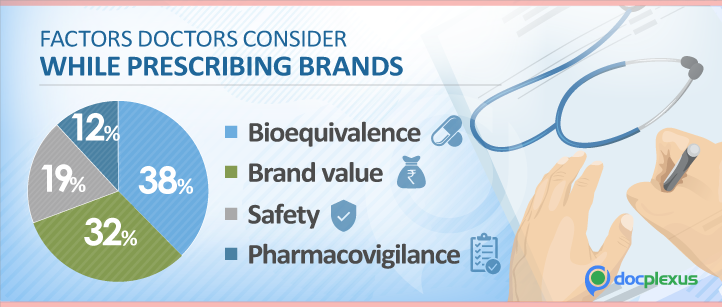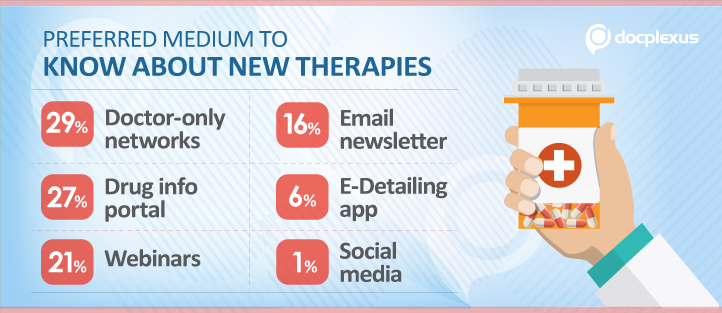
In 2017, when the Modi Government announced its populist move to make generic prescriptions mandatory, it challenged the status quo for pharma brand marketers. The following months witnessed more directives in favor of generics like –
• Generic medicines to be color-coded for easy differentiation from branded drugs.
• Separate shelves to be kept to display generics in pharmacies.
• Companies to print generic names on their labels in a font twice as large as brand names.
In its 2nd term, the government is expected to take even bolder decisions, and with Ayushman Bharat as its pet project, the push for generics will only get stronger.
While it is true that widespread use of generics in India won’t be a reality soon (given the inadequacies of the existing drug regulatory and quality control structure), we shouldn’t ignore the fact that generic medicines are seen as one of the best ways to lower healthcare costs across the world, and will always stay at the top in the minds of policymakers.
In this scenario, what can brand marketers do to ensure competitiveness and growth?
When the government first made its big announcement in 2017, doctors all over the nation strongly opposed it. Within Docplexus community too, doctors raised serious concerns against generics. A survey conducted on 1,082 doctors on Docplexus revealed the following key sentiments about generic prescriptions –

A whopping 79% of doctors were found not in favor of generics. 74% of doctors felt that generics will worsen patient outcomes, owing to doctors’ inability to prescribe combination drugs (e.g. triple drug combos for diabetes mellitus and hypertension, a quadruple drug for TB).
Around 31% feared that mandating prescription of generics would increase chances of medication error. They also noted that patients would be left at the mercy of chemists, who could dispense non-branded drugs with no assurance of quality, only to gain from the incentives being offered. A significant number was convinced that generic medicines would be of poor quality, compromising treatment outcomes (The recent news of 25 batches of drugs supplied to Janaushadhi Kendras being substandard is a case in point).
These findings clearly show that Indian Doctors are skeptical of generic medicines and given a choice, won’t risk their patients’ lives by prescribing them. It also becomes a base for pharma companies to reinvent their marketing strategies.
Marketing Brands Amidst Generics: 4 Areas of Focus
1.100% compliance on quality, safety & efficacy – It has been found that only 1% of generics sold in India are rigorously tested for quality like in the US or Europe. It is no secret that spurious drugs are in high supply across the country, often a consequence of manufacturing licenses procured dubiously. When we asked doctors what drug parameters they value the most while making prescription decisions, 38% voted for Bioequivalence. This is where branded drugs have an upper hand over generics.

Although generics are touted to be the replicas of original molecules, they often differ from their parent-forms. A comparison between branded and generic medicines is not only a comparison of the content of the ingredient but also of its purity and concentration. Lags in the manufacturing process, poor choice of excipients, inability to maintain efficacy in extreme temperatures – all of these may compromise bioequivalence and safety of generics. Therefore, pharma companies should ensure that they follow the most stringent quality checks and complete adherence to GMP – Good Manufacturing Processes. Only the highest commitment to quality & safety will guarantee that their brands continue to enjoy the trust and loyalty of prescribers amidst the influx of generics.
2. Incremental innovations – Innovator companies can focus on making their products more valuable through improvisations that benefit the patients and therefore, appeal to doctors. Incremental innovations such as better dosing options, novel drug delivery systems, improved drug properties, and smarter drug combinations can improve patient compliance and consequently, physician uptake. Novel drug delivery systems are particularly beneficial due to their role in boosting absorption, minimizing side-effects and improving overall efficacy. They help patients better manage chronic conditions like diabetes and asthma. They are also a step towards personalized treatments – predicted to be the future of medicine.
Other paths to extend the life of established brands include finding newer indications for existing drugs, introducing follow-on products or line extensions and even switching over to OTC segment. Below is a comprehensive account of different strategic options that brands can adopt in their fight against generics –

3. Brand communications: right message, the right way – According to Ted Leonhardt of The Leonhardt Group, “Branding is an emotional shortcut between a company and its customer”. It is this shortcut that doctors seek when they have to choose one out of the many drugs available. When doctors know and trust a brand for its commitment to patient health, it gains a strong competitive edge over little-known competitors. And it is this identity that marketers need to build for their products in the minds of physicians.

Branded drugs are widely trusted by physicians because their effectiveness has been proven through rigorous studies. Therefore, marketers must ensure that clinical trials data is properly communicated to KOLs and through them to the entire medical fraternity. Doctors today prefer short summarized versions of clinical trial reports that can be referred to at their convenience. Most choose webinars/online CME courses over in-person seminars to stay updated on the latest therapies. Digital connect therefore holds utmost value for marketers looking to offer superior customer engagement and experience. But not all digital media are equal when it comes to communicating brand stories.

As seen above, e-detailing apps and popular social media are the least preferred digital sources of information for doctors. Majority of doctors trust third-party networks that encourage unbiased dialogue & discussion with peers. Thus, pharma companies can be a step ahead of generics by making digital information available in online spaces that doctors are comfortable with.
In addition to digital touchpoints, brand managers must also revisit their offline marketing strategies. A shift away from transactional marketing to relationship-based one would clearly distinguish brands from their me-too versions. There is an urgent need to upskill field force so that prescribers derive more value out of in-person interactions. To know how pharma companies in India should reinvent their field force, Click Here.
4. Patient education & support – Patient community in India is either completely ignorant or highly misinformed (thanks to Dr. Google). In this scenario, patient education solutions (in-clinic literature, verified digital information resources, gamification) would be of great help to physicians in making their patients understand the nature of the disease, how the therapy works, and possible side-effects. Studies show that such education can contribute to better adherence and treatment outcomes. Patient support programs can provide much-needed emotional & financial support, especially in the case of chronic ailments. In a survey we conducted, 96% of doctors said such support programs improve patient outcomes. These beyond-the-pill initiatives will help pharma brand managers offer holistic solutions that address the pain-points of patients and physicians.
Final Thoughts:
The use of generic medicine was fostered in the first place to make the healthcare system in India affordable, but while the intent was right, the outcome may not be as desired. People need safe and effective treatments that lead to the best possible outcomes and for this to happen, physicians should be equipped to choose the best-suited drugs. For a brand to hold its own against its generic counterparts, marketers must prioritize quality & safety, find innovative ways of fulfilling patient & physician needs and adopt most-suitable digital media for marketing communication.
